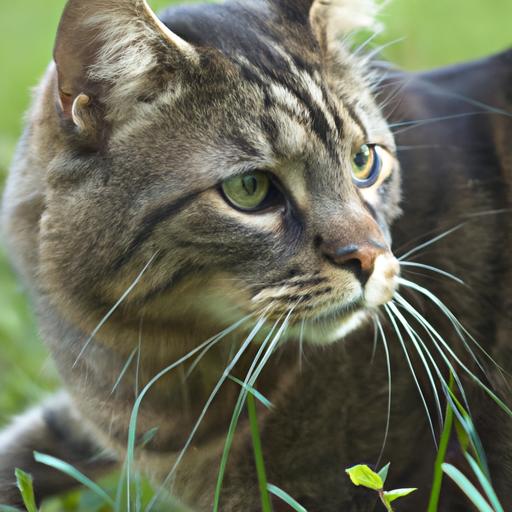
Tips for Successful Cat Harness Leash Training
Discover valuable tips for successful cat harness leash training. Learn how to choose the right harness, introduce it gradually, and use positive reinforcement techniques.
Introduction
Are you a cat lover who dreams of taking your feline friend for a walk outside? While cats are known for their independent nature, they can also be trained to walk on a leash with the right techniques and patience. Cat harness leash training is an excellent way to provide mental and physical stimulation for your feline companion, allowing them to explore the world beyond the four walls of your home. In this article, we will share valuable tips and insights to help you successfully train your cat to walk on a leash, ensuring a safe and enjoyable experience for both of you.

Tips for Successful Cat Harness Leash Training
1. Choosing the Right Harness and Leash
When it comes to cat harnesses, not all are created equal. Opt for a harness specifically designed for cats that offers a secure fit without restricting their natural movement. Look for adjustable straps and a comfortable material that won’t cause irritation. Additionally, choose a lightweight leash that provides enough length for your cat to explore while still allowing you to maintain control.
2. Introducing the Harness Gradually
Before you start training your cat to walk on a leash, it’s crucial to familiarize them with the harness first. Cats can be sensitive to new sensations, so introduce the harness gradually. Place it near their favorite resting spot, allowing them to sniff and investigate it at their own pace. You can also try leaving treats on or near the harness to create a positive association.
3. Positive Reinforcement Techniques
During the training sessions, it’s essential to use positive reinforcement techniques to encourage your cat’s cooperation. Reward them with treats, praise, and gentle strokes whenever they show interest in the harness or make progress in wearing it. Avoid using punishment or force, as this can create a negative experience and hinder their willingness to participate in future training.
4. Start with Short and Familiar Walks
When you feel your cat is ready to take their first steps on a leash, start with short walks in a familiar environment, such as your backyard or a quiet indoor space. Allow them to explore at their own pace, giving them plenty of freedom while maintaining a close eye on their safety. Observe their body language and provide reassurance and support if they seem anxious or unsure.
5. Gradually Increase Duration and Distance
As your cat becomes more comfortable with leash walking, gradually increase the duration and distance of your walks. Start by adding a few minutes to each session, and slowly expand the territory you explore together. Remember to be patient and adapt to your cat’s pace, as some may take longer to adjust than others. The goal is to create positive experiences and build their confidence over time.
6. Be Patient and Understanding
Harness leash training requires patience and understanding. Cats have unique personalities and may exhibit varying levels of enthusiasm or resistance. Respect their boundaries and never force them into uncomfortable situations. It’s crucial to listen to their cues and allow breaks or retreats if needed. With time and positive reinforcement, most cats can learn to enjoy leash walking.
FAQ (Frequently Asked Questions)
Can any cat be trained to walk on a leash?
While most cats can be trained to walk on a leash, it’s important to remember that each cat is an individual. Some may take to leash training more naturally, while others may require extra time and patience. Regardless of your cat’s breed or age, it’s worth giving leash training a try, as it can provide numerous benefits for their overall well-being.
How long does it usually take to train a cat to walk on a leash?
The duration of cat harness leash training can vary depending on various factors, such as your cat’s personality, previous experiences, and their level of comfort with new environments. Some cats may adapt quickly within a few weeks, while others may require months of consistent training. Remember to be patient, understanding, and celebrate small victories along the way.
Are there any specific breeds that are more suitable for leash training?
While any breed of cat can potentially be trained to walk on a leash, some breeds are known to be more receptive to leash training than others. Abyssinians, Bengals, Maine Coons, and Savannah cats are often considered more adventurous and open to new experiences. However, it’s important to remember that individual personalities can vary within each breed, so it’s best to assess your cat’s unique needs and preferences.
What should I do if my cat refuses to wear the harness?
If your cat shows resistance to wearing a harness, it’s important not to force them into it. Instead, try using positive reinforcement techniques and gradually introduce the harness as outlined earlier. If the issue persists, consider consulting with a professional cat trainer or veterinarian who can provide additional guidance tailored to your cat’s specific needs.
Conclusion
Cat harness leash training opens up a world of possibilities for you and your feline companion. By following the tips outlined in this article, you can create a positive and successful training experience. Remember to choose the right harness and leash, introduce them gradually, use positive reinforcement techniques, start with short walks, and be patient and understanding. With time and dedication, you can enjoy the wonders of the great outdoors together, while ensuring your cat’s safety and well-being. So, grab your harness, put on that leash, and embark on a new adventure with your furry friend today!
Remember, the key to successful cat harness leash training is love, patience, and understanding.























